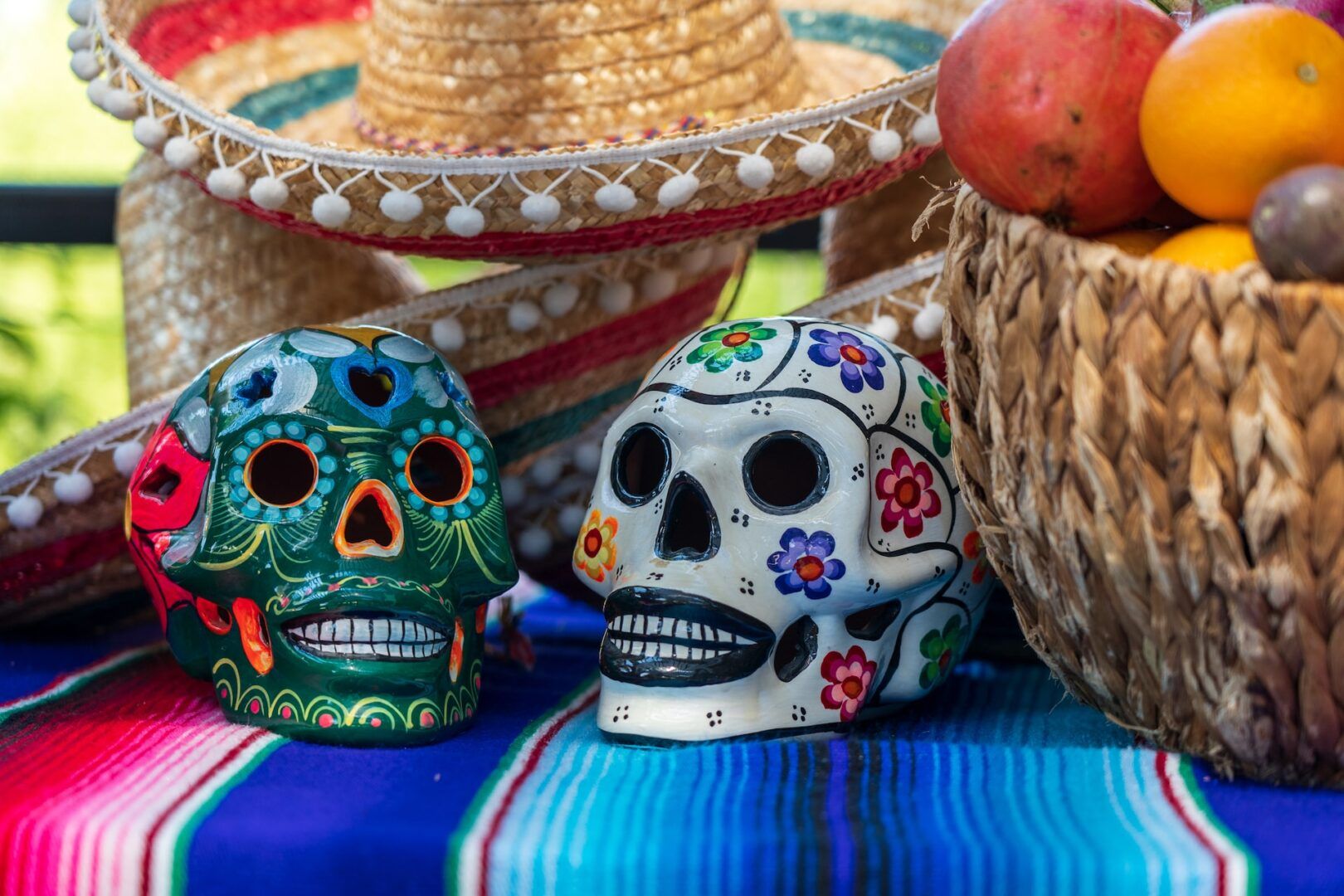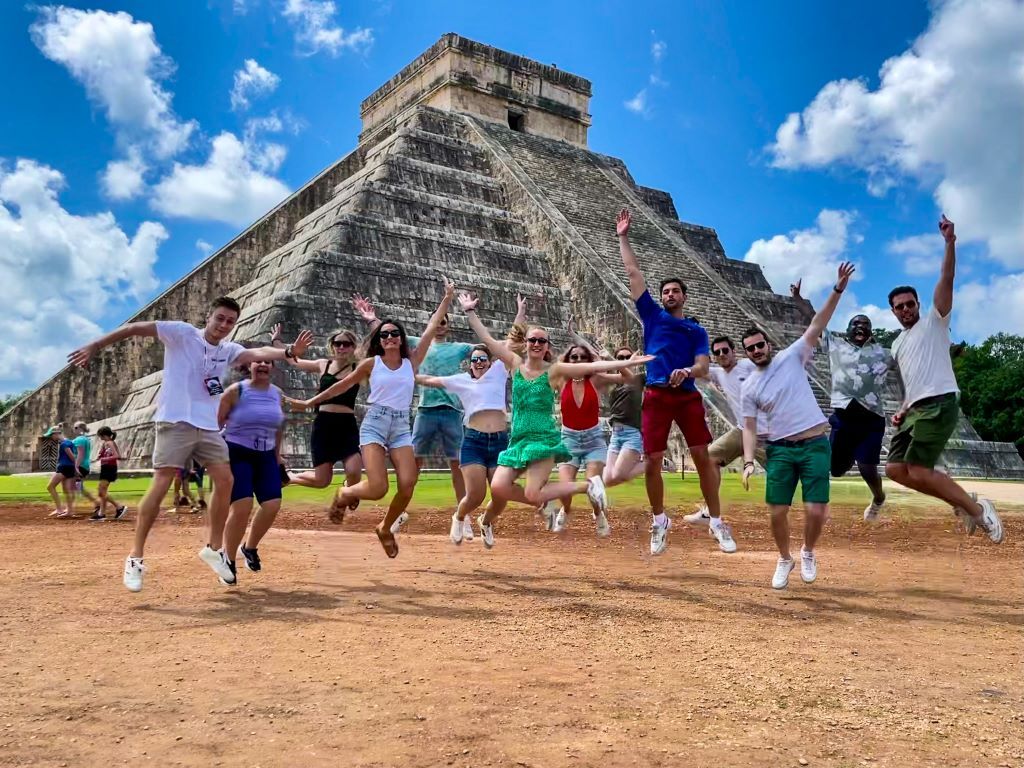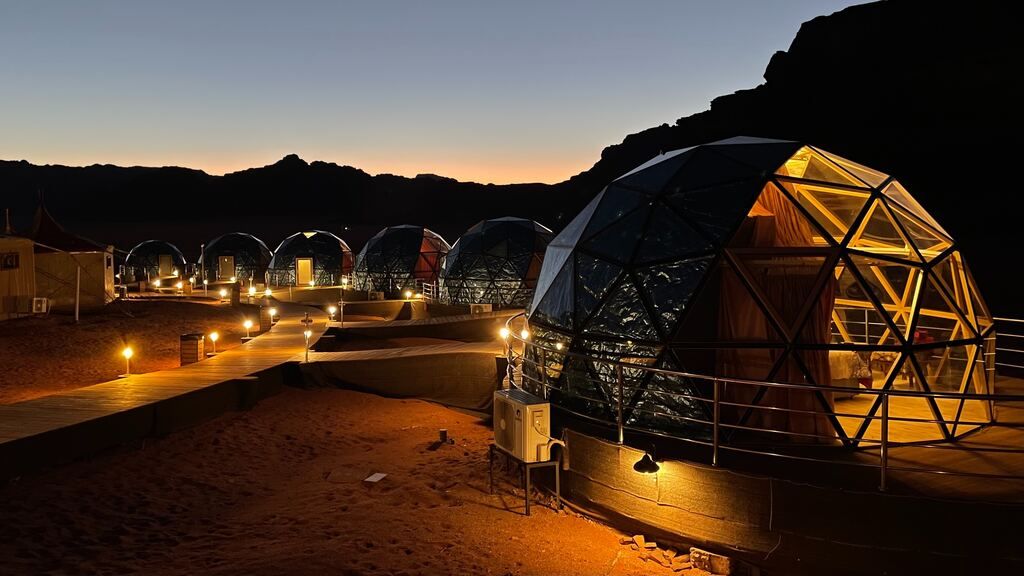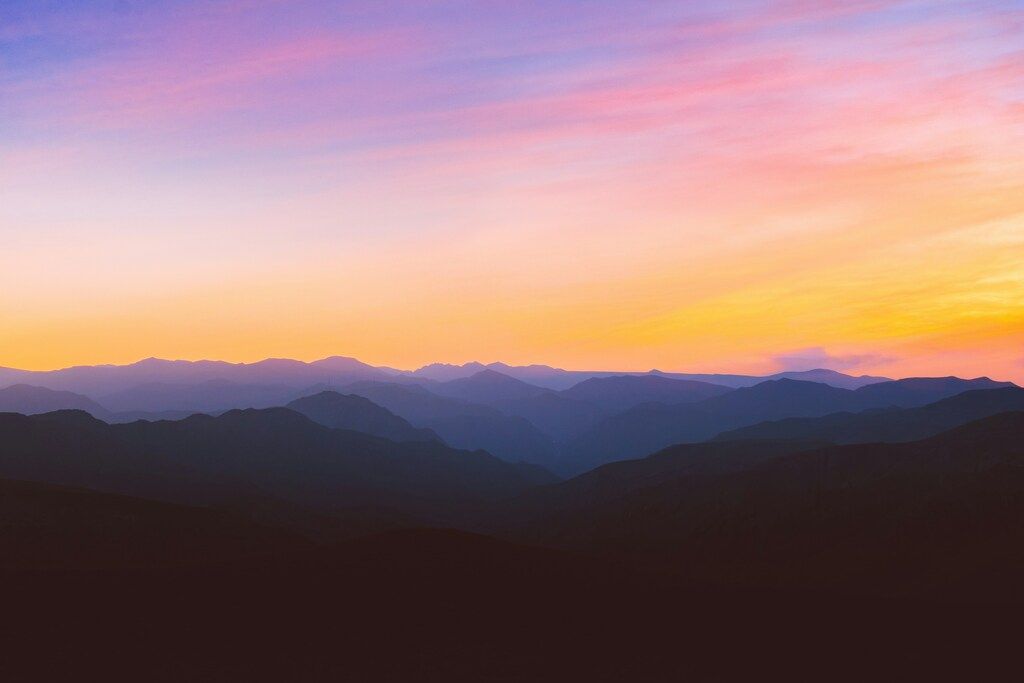

A salute to life: this is the deepest meaning of the Dia de los Muertos, one of the most heartfelt and awaited celebrations in Mexico. On the days around November 1st and 2nd, the cities and villages get filled with colours, parades and events.
The cemeteries are coloured with the yellow and orange of the cempasúchil, this holiday’s typical flowers, while the streets are besieged by market stalls. Families gather around the tombs of their loved ones, surrounding them with altars, the altars of the dead, and decorating them with offerings that also include the foods they preferred when they were alive. All this is to remember and celebrate the families and loved ones who are no longer with us and celebrate the beauty of life.
Where to celebrate the Day of the Dead in Mexico
The celebrations of the Day of the Dead are felt all over the country. However, there are some areas of Mexico where the festivities are particularly colourful and folkloristic and still keep all the traditions of this festival intact. What’s more, this has also been an intangible cultural heritage of humanity since 2008.
Mexico City
In Mexico City (or FD, Federal District) the parades are incredible. The streets are lined with allegorical floats with a thousand decorations, skulls, giant skeletons, incredible Catrina (the lady of death), people dress in bright colours and paint their faces; everywhere resounds with songs and cheerful music. It is worth being here even in the days before the real celebrations to breathe the magical atmosphere of this period.

Oaxaca
In Oaxaca, the comparsas (groups of singers) play all day and the locals set up the Plaza de la Muerte (the square of death) where the artisans exhibit their products created specifically for the Dia de los Muertos. The calaveras (the typical Mexican skulls) are found in practically every stall – even edible ones, such as sweets or candies.
Yucatan Peninsula
While in the Yucatan Peninsula, the right place to be during the Dia de los Muertos is Mérida. Here the celebrations are called Hanal Pixan (“feast for souls”). In Mérida, families prepare a special dish based on chicken and banana leaves that is appreciated by both the dead and the living.
Patzcuaro
One of the most exciting celebrations is held in the area of Pátzcuaro. On the island of Janitzio, on Lake Pátzcuaro, there is a nocturnal procession. Families carry floating candles to the lake and then let them be carried off by the current. Seeing the lake at night illuminated by the dim light of candles is one of the strongest evocations you can experience in Mexico during these festive days.

Want to learn more about Mexico? Read our guide to the 15 places you can’t miss!
Curiosities about Dia de los Muertos
The origins of the Day of the Dead
The Dia de los Muertos has ancient origins. This festival dates back to Aztec times, who believed that death was a natural phase of life. In fact, the deceased were still considered members of the community! Despite European colonisation and the arrival of Christianity, this cult has remained almost unchanged over the centuries. Even today, the concept of life and death has remained the same.

Meaning
During the Dia de los Muertos, the focus of the festival is to celebrate life, remembering the importance of living in the present. Death is nothing more than the continuation of life, a rite of passage, and must not be feared. Indeed, it must be embraced with a smile. A philosophy of life that has much to teach and that should be understood and welcomed in all its beauty.
The Day of the Dead is not Halloween
During the Dia de los Muertos, spirits are eagerly awaited and greeted with joy because they return to their loved ones only on 2 November. They are therefore benevolent and not synonymous with fear. On the contrary, the American tradition of Hallowe’en embraces the notion that spirits are evil; 31 October is a bleak night where terror is celebrated. This couldn’t be more distant from the Mexican festival!

Cemeteries are the focal point of the festival
In some communities, such as in villages near Lake Pátzcuaro, it is normal to spend the entire night in a cemetery, near the tomb of your loved ones. Now, this might seem a sad and somewhat macabre experience. But when you take into account the philosophy behind this festival, this way of celebrating takes on a whole new meaning! The tombs are decorated with flowers and altarpieces. Everyone dines together, singing and celebrating all night, waiting for the arrival of the souls of the dead.
The Dia de los Muertos is a moment of sharing
This party is a moment of extreme sharing for all the Mexican people. In fact, families not only reunite with their dear departed but also with each other, pouring into the squares and streets, dressed in festive clothes and with painted faces to resemble skulls.
We’re all skeletons.
The symbol par excellence of the Dia de los Muertos is the skull, which has a very precise meaning. They serve to remind us to celebrate our life and mortality and to live every moment of our existence to the fullest. At the end of the day “Todos somos calaveras“: we are all skeletons.
The Dia de los Muertos’ most famous skeleton is undoubtedly the Catrina Skull, the Lady of Death. Created by cartoonist Josè Posada as a provocation and satire for Mexicans who tried to imitate Europeans, today it is one of the favourite women’s masks during the holidays.

The Offerings for the Dead
In the cemeteries, tombs are surrounded by altars of the dead, small altars that represent a kind of door between life and death and have the purpose of attracting the dead; families bring the offerings for the dead – usually their loved one’s favourite food when they were alive. Perfect to welcome them back to Earth and to encourage them to return, even for one night!
Delicacies of the Dead
Like any self-respecting festival, Dia de los Muertos also brings with it many culinary specialities, especially sweets and cakes. The Pan de Muertos, the bread of the dead, is a sweet bread flavoured with orange blossoms. In any stall you can find all the sugar skulls (calaveras de azúcar in Spanish) you can manage. According to tradition, friends and family gather to create a sugar skull for each deceased loved one. Then, they put it on an altar or on a tombstone as an offering to the spirit of the decceased. Although sugar skulls may look appetising, they’re difficult to digest due to their mix of sugar and meringue. Plus, they’re often decorated with glitter, sequins, and feathers… so probably better to avoid!

Did that make you want to take a trip to Mexico? Then discover our itinerary in the Mayan Yucatan. And if you want to leave for the Dia de los Muertos… well, we have a proposal for this too!



